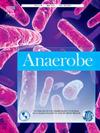基于肖伏梭菌天然抗原的间接elisa检测牛黑足特异性抗体的比较评价。
IF 2.6
3区 生物学
Q3 MICROBIOLOGY
引用次数: 0
摘要
目的:黑腿病,又称黑节病(black quarter, BQ),是一种由厌氧细菌——肖伏梭菌引起的牛急性致死性感染。有灭活疫苗用于疾病控制,评估对疫苗或易感动物自然感染的免疫反应对于在流行地区实施有效的疫苗接种战略至关重要。本研究的重点是建立基于牛黑足原生性抗原(全细胞和鞭毛)的间接elisa检测牛血清中黑足特异性抗体,并进行比较评价。方法:采用常规方法提取chauvoei菌株NIVEDIBQ1的全细胞和鞭毛抗原,并将优化后的间接elisa与间接血凝试验(IHA)进行比较。这些检测方法用于筛选从黑腿流行的印度安得拉邦收集的810份血清样本。结果:采用棋盘滴定法确定最佳抗原浓度(250 ng全细胞抗原和300 ng鞭毛抗原)、血清稀释度(1:100)和偶联稀释度(1:10 000)。优化后的检测方法在全细胞抗原和鞭毛抗原的血清稀释度分别为1:1600和1:8 00时可靠地检测出chauvoeii特异性抗体,且无交叉反应。使用Cohen’s Kappa分析的IHA和间接elisa的比较表明,这两种检测方法同样有效。经ROC分析,全细胞和鞭毛抗原的诊断敏感性(DSn)分别为96.0%和95.0%,诊断特异性(DSp)分别为95.0%和97.0%,截止标准分别为>20.7632和18.579。在安得拉邦,全细胞和鞭毛抗原间接elisa血清阳性率分别为57%(462)和40.9%(332)。结论:本研究证明了基于天然抗原的间接elisa检测黑足病流行区牛的特异性抗体的潜在应用前景。本文章由计算机程序翻译,如有差异,请以英文原文为准。

Comparative evaluation of indirect-ELISAs based on native antigens of Clostridium chauvoei for the detection of blackleg-specific antibodies in cattle
Objective
Blackleg, also known as black quarter (BQ), is an acute and lethal infection in bovines and caused by the anaerobic bacterium- Clostridium chauvoei. A killed vaccine is available for disease control, and evaluating the immune response to the vaccine or natural infection in susceptible animals is crucial for implementing effective vaccination strategies in endemic regions. This study focused on the development and comparative evaluation of indirect ELISAs based on native antigens (whole cell and flagellar) from C. chauvoei to detect blackleg-specific antibodies in serum samples collected from cattle.
Methods
Whole cell and flagellar antigens were extracted conventionally from C. chauvoei strain NIVEDIBQ1, and optimized indirect ELISAs were compared with the indirect hemagglutination assay (IHA). These assays were used to screen 810 serum samples collected from Andhra Pradesh, India, where blackleg is endemic.
Results
Optimum antigen concentrations (250 ng of whole cell antigen and 300 ng of flagella), serum dilution (1:100), and conjugate dilution (1: 10,000) were determined using the checkerboard titration method. The optimized assays reliably detected C. chauvoei-specific antibodies at serum dilutions as low as 1:1600 for whole cell antigens, and 1: 800 for flagellar antigens without any cross-reactions. A comparison between IHA and indirect ELISAs using Cohen's Kappa analysis indicated that the two assays were equally effective. A diagnostic sensitivity (DSn) of 96.0 % and 95.0 %, and diagnostic specificity (DSp) of 95.0 % and 97.0 %, with cut-off criteria of >20.7632 and 18.579, for whole cell and flagellar antigens, respectively, was observed after ROC analysis. The observed seropositivity rates in Andhra Pradesh were 57 % (462) and 40.9 % (332) for whole cell and flagellar antigen based indirect ELISAs, respectively.
Conclusion
This study demonstrated the potential application of native antigen-based indirect ELISAs for monitoring blackleg-specific antibodies in cattle from endemic regions.
求助全文
通过发布文献求助,成功后即可免费获取论文全文。
去求助
来源期刊

Anaerobe
生物-微生物学
CiteScore
5.20
自引率
8.70%
发文量
137
审稿时长
76 days
期刊介绍:
Anaerobe is essential reading for those who wish to remain at the forefront of discoveries relating to life processes of strictly anaerobes. The journal is multi-disciplinary, and provides a unique forum for those investigating anaerobic organisms that cause infections in humans and animals, as well as anaerobes that play roles in microbiomes or environmental processes.
Anaerobe publishes reviews, mini reviews, original research articles, notes and case reports. Relevant topics fall into the broad categories of anaerobes in human and animal diseases, anaerobes in the microbiome, anaerobes in the environment, diagnosis of anaerobes in clinical microbiology laboratories, molecular biology, genetics, pathogenesis, toxins and antibiotic susceptibility of anaerobic bacteria.
 求助内容:
求助内容: 应助结果提醒方式:
应助结果提醒方式:


